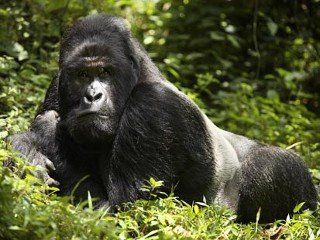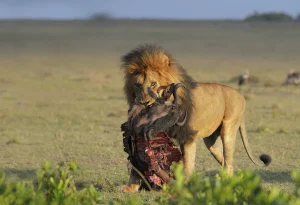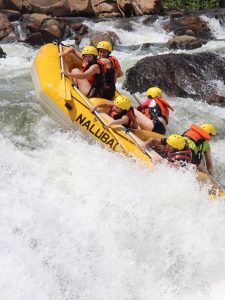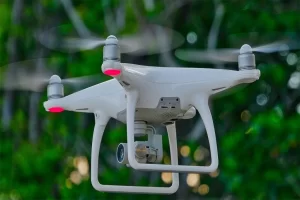Gorilla trekking in Uganda is one of the most extraordinary wildlife experiences on Earth. With half of the world’s mountain gorilla population residing in Uganda’s Bwindi Impenetrable National Park and Mgahinga Gorilla National Park, the country has become a premier destination for adventurers and conservation enthusiasts. A common question for travelers planning this trip is: How many days do I need to see gorillas in Uganda?
The answer depends on your travel style, interests, and the level of comfort you desire. Some visitors are looking for a quick in-and-out trek, while others want a more relaxed pace with opportunities to explore Uganda’s diverse wildlife and culture. Below is a comprehensive guide to help you decide how many days you’ll need for your gorilla trekking adventure in Uganda. Gorillas in Uganda
Three Days: The Minimum Itinerary
If you’re short on time, a three-day itinerary is the absolute minimum you’ll need to trek gorillas in Uganda. This compact schedule is commonly offered by tour operators and is best suited for travelers who want to focus solely on seeing the gorillas without adding other activities.
Day 1: Travel to Bwindi or Mgahinga
Start early from Kampala or Entebbe. The road trip to Bwindi takes approximately 8–10 hours, depending on the sector of the park you’re visiting. Alternatively, you can take a domestic flight from Entebbe to Kihihi or Kisoro, which reduces travel time to about 1 hour, followed by a short drive to your lodge.
Day 2: Gorilla Trekking
This is the highlight of your trip. After an early morning briefing by the Uganda Wildlife Authority, you’ll begin your trek into the rainforest to find one of the habituated gorilla families. The hike can take anywhere from one to six hours, depending on where the gorillas are located. Once you reach them, you’ll spend one magical hour observing the gorillas in their natural habitat.
Day 3: Return to Kampala or Entebbe
After breakfast, you’ll either take a return flight or begin the long road journey back. This itinerary is tight but doable for those who want to see the gorillas with limited time.
Four to Five Days: A More Comfortable and Flexible Option
A four to five-day trip allows for a more comfortable pace, and it’s ideal if you want to include some light activities beyond gorilla trekking.
Day 1: Arrival in Uganda
Arrive in Entebbe or Kampala and spend a relaxed day recovering from your international flight. You can visit the Uganda Wildlife Education Centre, the Entebbe Botanical Gardens, or take a boat ride on Lake Victoria.
Day 2: Travel to the Gorilla Region
Head to Bwindi or Mgahinga via road or domestic flight. You can make scenic stops along the way, such as the Equator crossing or local craft markets. If you’re traveling by air, you’ll have more time to explore the area near your lodge upon arrival.
Day 3: Gorilla Trekking
Participate in the unforgettable gorilla trek. After your one-hour encounter with the gorillas, return to your lodge to relax and reflect on the experience.
Day 4: Optional Activities
Use this day to explore the region. Options include golden monkey tracking in Mgahinga, nature walks in Bwindi, visiting a Batwa pygmy community, or even canoeing on Lake Bunyonyi.
Day 5: Return Journey
Head back to Kampala or Entebbe. This extra time helps you avoid rushing and adds depth to your overall experience.
Seven to Ten Days: The Ultimate Ugandan Safari
For travelers who want to fully explore Uganda’s rich biodiversity, a 7 to 10-day itinerary allows you to combine gorilla trekking with other incredible experiences like chimpanzee tracking, wildlife safaris, and cultural encounters.
Days 1–3: Gorilla Trekking
Begin with a three-day trek itinerary as previously outlined. Bwindi Impenetrable Forest is the most popular park for gorilla trekking, but Mgahinga Gorilla National Park is a quieter alternative with similar encounters.
Days 4–5: Chimpanzee Tracking in Kibale Forest
Travel to Kibale National Park for chimpanzee tracking. Kibale is known for its high success rate of chimp sightings and is home to 13 primate species. The chimpanzee habituation experience, which allows up to four hours with the chimps, is also available here.
Days 6–7: Safari in Queen Elizabeth National Park
Next, head to Queen Elizabeth National Park for a classic African safari. Enjoy game drives to spot lions, elephants, buffalo, and more. Take a boat cruise on the Kazinga Channel for a chance to see hippos, crocodiles, and a variety of bird species.
Days 8–9: Cultural and Scenic Experiences
Visit local communities, explore crater lakes, or spend time at Lake Bunyonyi, one of Africa’s most scenic lakes. Activities include canoeing, bird watching, and guided nature walks.
Day 10: Return to Kampala or Entebbe
End your journey with a drive or flight back for your departure.
Choosing the Right Gorilla Trekking Sector
Bwindi Impenetrable National Park has four sectors: Buhoma, Ruhija, Rushaga, and Nkuringo. Each offers unique trekking experiences and accommodation options.
- Buhoma: The most accessible sector with a range of lodges and easy trailheads.
- Ruhija: Offers great birding and less crowded treks.
- Rushaga: Has the highest number of habituated gorilla families and offers the Gorilla Habituation Experience.
- Nkuringo: More remote and physically challenging but rewarding for its scenery.
Mgahinga Gorilla National Park is smaller but quieter, and it is ideal for travelers who want to avoid the crowds.
Permit Costs and Booking
As of 2025, a gorilla trekking permit in Uganda costs $800 for foreign non-residents, $700 for foreign residents, and approximately $75 for East African citizens. This fee includes the one-hour experience with a gorilla group, a guide, and ranger protection.
Permits are limited and sell out quickly, especially during the high seasons of June to September and December to February. It is advisable to book permits at least six months in advance through a registered tour operator or directly from the Uganda Wildlife Authority.
Best Time to Trek Gorillas in Uganda
Gorilla trekking can be done year-round, but the best time is during the dry seasons from June to September and December to February. These months offer more favorable hiking conditions and easier terrain. The wet seasons from March to May and October to November tend to have fewer tourists, and some lodges offer discounts, but the trails can be slippery and muddy.
Physical Preparation and What to Expect
Gorilla trekking can be physically demanding. The terrain in Bwindi is steep and can be challenging due to thick vegetation and high humidity. It’s recommended to prepare by engaging in regular hikes or walks before your trip. Wear sturdy hiking boots, long-sleeved shirts, and gloves to protect yourself from thorny plants and insects.
Each trek group is led by trained rangers, and you can hire a porter to carry your gear and assist you on steep sections. The trek can last from a couple of hours to an entire day, depending on the gorillas’ location.
Gorilla Habituation Experience
If one hour with gorillas isn’t enough, consider the Gorilla Habituation Experience available in the Rushaga sector. This special activity allows you to spend up to four hours with a gorilla family undergoing the habituation process. The cost is higher—$1,500 per permit—but the experience is more intimate and immersive. Gorillas in Uganda
Summary: Recommended Number of Days
- 3 Days: Suitable for travelers who want to focus only on gorillas and have limited time.
- 4–5 Days: Ideal for a more relaxed trip with additional activities around Bwindi or Mgahinga.
- 7–10 Days: Perfect for those who want a full Ugandan safari experience including gorillas, chimpanzees, game drives, and cultural tours.
The number of days you need to see gorillas in Uganda depends on how deep you want to go into the country’s natural and cultural offerings. Whether it’s a quick trek or a full wildlife circuit, Uganda offers something unforgettable for every traveler. Gorillas in Uganda




